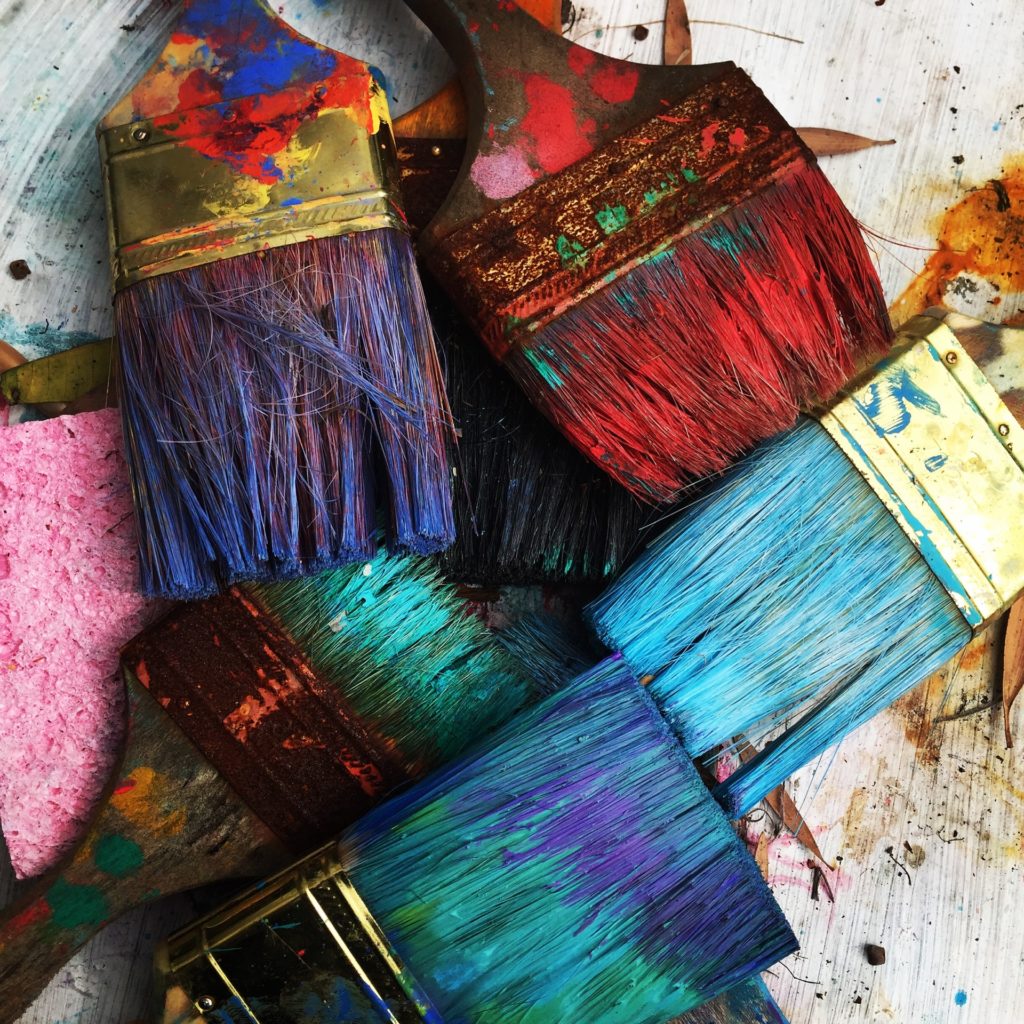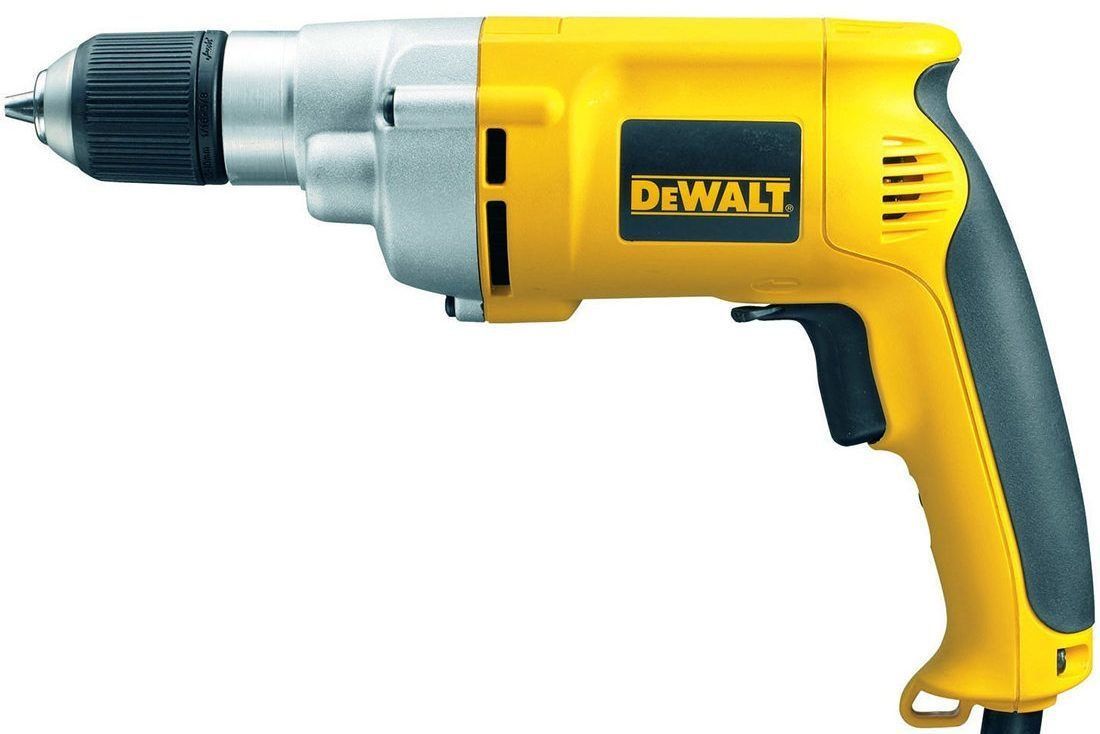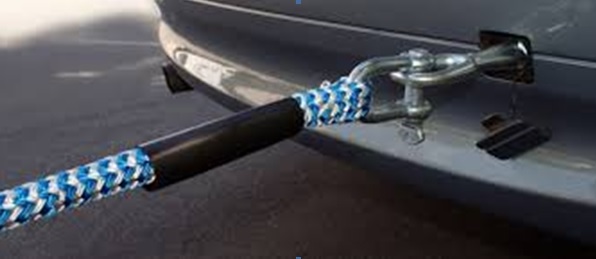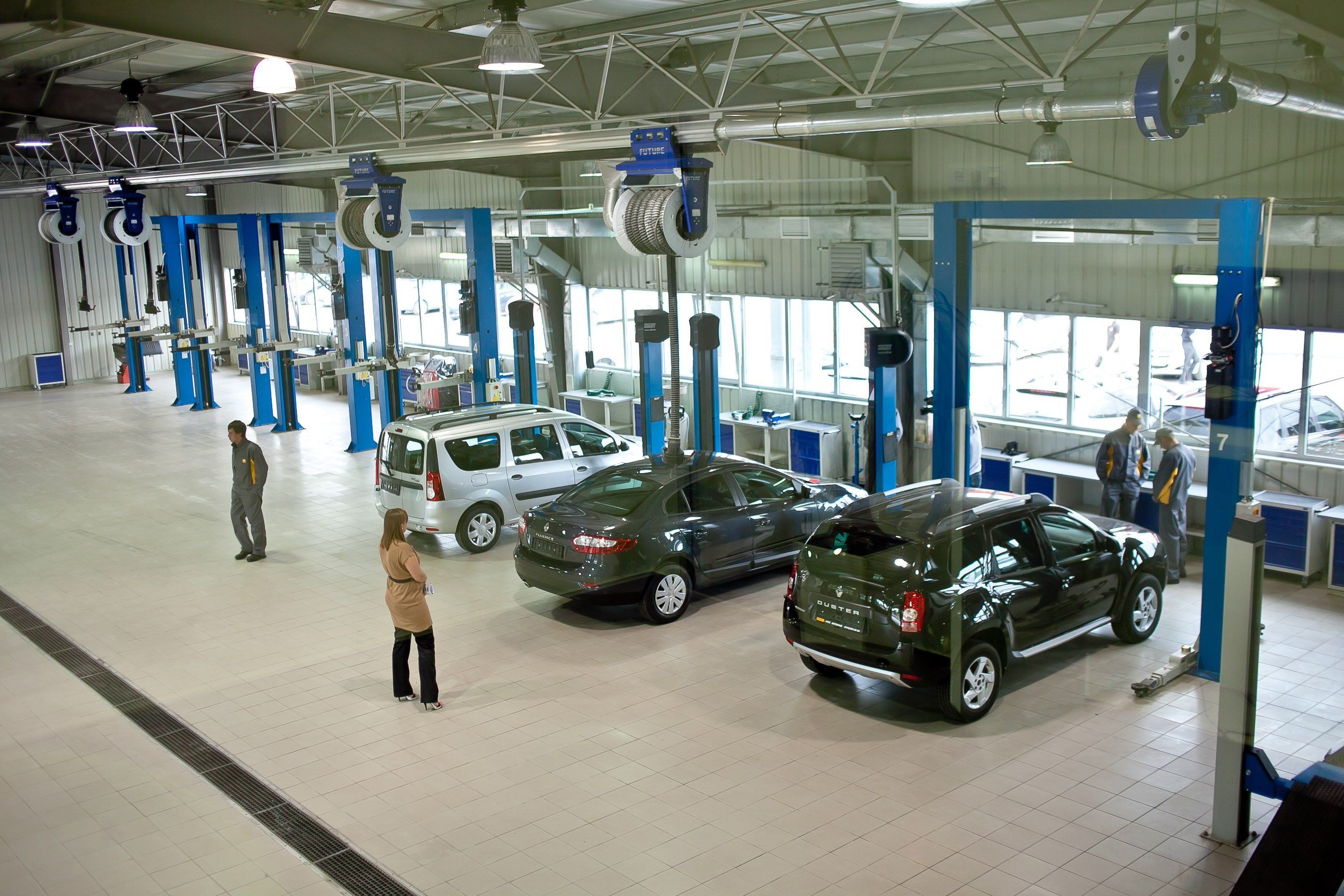Ranking the best tile paints for 2022

Painting a tile is a popular way to update any type of finish with a matching material. This method of interior repair has several significant advantages, among which are the masking of defects created by time, as well as the ability to bring new notes to the decor of the room. Moreover, the operation itself is not very complicated, and it is possible to perform it yourself. However, for this you need to correctly select the type of tile paint, because they all differ in their composition and may be incompatible with the base being painted. Some options are not suitable for the bathroom, while others will not look good on the floor and will not be able to withstand a purely mechanical load.

Content [Hide]
- 1 Purpose of coloring tiles
- 2 Design Variations
- 3 Advantages and disadvantages of painting tiles
- 4 Possible methods of work on the painting of paintwork materials for tiled bases
- 5 Self-painting tiles
- 6 Difficulties of choice
- 7 Ranking the best tile paints for 2022
- 8 Conclusion
Purpose of coloring tiles
The choice of such a paintwork, by and large, should be based on the goals pursued by the entire repair operation. It can be:
- Aesthetic preferences - old tiles laid in the bathroom or in the kitchen have noticeably faded over time and no longer look very presentable. If a complete replacement of the tiled base can be a financial problem, then painting it will be the best solution.
- Applied waterproofing - by means of a paintwork material (LKM) it is possible to qualitatively protect the floor and walls from moisture, while ensuring complete seam tightness between the tile modules.
- Change of style - in this case, the goal is to radically change the interior by completely replacing existing color shades or introducing new elements.
- The formation of a new decor - the creation of full-scale images and paintings, various ornaments and patterns.
- Full repair - this operation is carried out most often when the situation of the room completely changes (new interior items and headsets are installed). However, the tile is only renewed and acquires a new tone, in harmony with the surrounding objects.
Design Variations
In the conditions of modern design business, there are several ways to paint tiles from any material. Depending on the conceived project and your own imagination, you can bring to life the most original and daring ideas. Designer color options include:
- Capital - full-scale replacement of the color and tint palette, change of applied images and ornaments.
- Color update - with this option, the overall picture does not change, but the existing shades are simply updated and refreshed. In this case, the restoration of individual parts of the overall design is allowed.
- Creation of patterns - a similar method of decoration can be carried out both over the entire surface area, and in separate fragments, at the same time tile modules can be separately distinguished.
- Images - they are applied again both on the floor covering and on the walls. Being not too bulky, they are able to give the room a special charm. They can be applied either manually or with the help of stencils.
Advantages and disadvantages of painting tiles
The obvious advantages of this type of work include:
- Their high holding speed;
- Possibility of masking chips and other coating defects;
- Application of an almost unlimited color palette;
- Relatively low cost of all operations;
- Easier workflow.
Obvious disadvantages include:
- Some difficulty in choosing a specific type of varnish or paint;
- Relative fragility of some types of coatings;
- The need to prepare a tiled base.
IMPORTANT! If we are talking specifically about the production of repair work on the type of coating in question, then it is preferable to involve a professional specialist for these operations. In the absence of proper experience from the master, when painting, obvious transitions from one shade to another (without a visible gradient), the creation of layers of layers and other problems may occur.
Possible methods of work on the painting of paintwork materials for tiled bases
Due to the fact that the type of material under consideration is extremely diverse, each type of material will require a special working solution. Such a solution should also meet the technical composition of the paintwork, and the capabilities and skills of the master, and the current needs in design. In total, three types of color can be distinguished:
- Full is the simplest decoration method, which even inexperienced craftsmen can do. It is a complete overlap of the patterns and colors available on the basis. The application procedure itself is very fast, and the final result can be supplemented with new images according to the background color.
- Partial - this method is somewhat similar to the previous one, but it differs in selective coverage of tiles, that is, the master first selects which modules will be reworked. For example, only modules with a picture or located in a certain place fall under shading.Such work involves the preliminary protection of places that must retain their original state (as a rule, they are isolated with a film or masking tape).
- The return of the shade - if the tile generally suits its owner, but he has already managed to acquire a shabby appearance, then its color can be updated. In these circumstances, the main thing is to correctly select the color palette, which is the same as the original basis, at most it can differ by one or two tones. But the essence of the whole operation will be not only the return of color, but also the restoration of existing ornaments. But for them, the already selected paint should match 99.9%, because it must be applied over the base.
Features of tile paint
Just two decades ago, painting floor/wall tiles was considered a rare operation. On the market, only some special coatings for such procedures were available. In modern sales, you can already find a large selection of coatings for all common types of tiles: ceramic, porcelain or gypsum. Moreover, these coatings have fairly affordable prices. Tiled coatings differ in their structure and quality of finishing from standard emulsions. They should adhere much better with a smooth base, which is distinguished by the absence of pores and roughness. It is these properties that allow the layer not to delaminate and prevent it from running off. Also, it is characterized by resistance to interaction with water, abrasion, scratches during daily use. It is worth noting that different types of coloring material are used for floors and walls, but most types perfectly cover terracotta, marble, gypsum, cement, ceramics and porcelain stoneware, as well as the extremely popular glaze.Most manufacturers are trying to produce multifunctional and universal compositions that can be applied to almost all popular bases, which, in principle, is not so difficult, because whatever the surface material, it always has an increased degree of smoothness. If the composition has any features or contraindications for use, then information about this will be directly indicated on the package.
Types of coatings for painting tiles
- Oily
They are used most often for tiles and they are the most budget option of all existing ones. Application can be done by sprayer, brush or roller. The drying speed is from one day and will also depend on the drying oil contained in the composition, which is used as a binding element. Also, the available pigment inclusions and drying temperature will play an important role. The oil-based coating is characterized by low hardness and low resistance to water. Such a coating is unlikely to withstand various alkalis (washing powders or soda), which will certainly have a devastating effect on it. Oil samples are best used on dry substrates indoors.
- Alkyd
This is a relatively inexpensive product. Alkyd coatings, when compared to the oils described above, have a greater degree of weather resistance, they are more resistant to abrasive detergents and mineral-based oils. They are characterized by increased hardness, special external gloss and water resistance. Able to withstand significant temperature fluctuations ranging from -50 to +60 degrees Celsius. Fully retain their original properties for four years.Alkyd samples with rosin inclusions will be the best solution for flooring applications.
- Glyphthalic and pentaphthalic
These compositions have almost similar properties and are a kind of offshoot from alkyd samples, which are intended for ceramic modules. There are special variations (GF and PF 115) with which it is even possible to cover street tiles, because they have good weather-resistant properties. Some samples are recommended exclusively for interior decoration (for example, PF 226), but due to the ability to withstand high mechanical loads, they can be used in rooms with high traffic. However, after applying this type of paintwork materials, its finishing primer with special compositions (FL 03 K, FL OZZH) will be required.
- Nitro paint
It is produced on the basis of nitrocellulose varnish and is recommended for application on ceramic substrates. It belongs to the segment of budget coloring materials, characterized by a high drying speed (from 10 to 30 minutes) at room temperature. It is preferable to apply by spray, but if you use a brush, then due to the rapid drying, traces of smudges and bumps may remain. Due to the increased hardness, the coating material in question has a reduced elasticity, which can lead (over time) to the formation of chips on the painted parts. The main advantage of nitro paint is its smoothness and excellent specularity. It can be applied both outside, and in rooms.
IMPORTANT! It is always worth remembering that nitro paint is flammable and toxic, so all work must be carried out by the master only in a respirator!
- Acrylic
These water-based paints are best suited for tiles, but they are also allowed to paint ceramics with high quality.They are divided into two types: alkyd-acrylic and polyacrylate. The main disadvantage is that the price is too high. Antiseptic substances can be added to some variations, for example, penotex, which perfectly prevents the formation of mold on painted module tiles. Of the positive qualities, one can distinguish excellent moisture resistance and weather resistance. Use is possible both indoors and outdoors, but more often the compositions are used in rooms with high humidity (bathrooms, pools, saunas, etc.). Shades can be both glossy and matte.
- Paints for glass tiles
Very rare samples that are used exclusively for design purposes for applying decorative images and patterns on modules. It is not advisable to use them for continuous painting due to the high cost. Nevertheless, glass coatings can perfectly be combined with each other, maintain color brightness and contrast, and resist moisture well. The drying speed is quite high and is three hours. After application, the painted surface will need to be finished with a protective layer of clear varnish.
- Epoxy
These enamels can be attributed to special-purpose products, they are distinguished by increased performance. Recommended for painting tiles, for which such indicators as resistance to mechanical stress, successful resistance to alkalis, oil products and solvents, good water resistance, fire resistance and dielectricity are important. Epoxy coatings have high quality decor, easily retain their performance properties for six years.
Self-painting tiles
First of all, you should attend to safety measures - for this it is recommended to use durable work clothes, rubber gloves, a hat and goggles. The entire sequence of actions will include the following steps:
- The prepared paint must be thoroughly mixed until a homogeneous mass and consistency is formed.
- The resulting composition is poured into a special paint tray or other container, where it will be convenient to dip the roller or brush.
- The brush is used for painting hard-to-reach places, and the roller is used for large areas.
- The paint should be applied in several layers, their number will depend on the tile relief - for the smoothest variations, a minimum of 3-5 layers will be required. Coloring starts from the opposite corner to the entrance.
- The next layer should be applied only after the previous one has dried (usually 72 hours). This rule is universal and is suitable for both walls and floor coverings.
- In order to create an optional protection, it is preferable to cover the paint layer with an additional varnish, due to which the entire result of the work will become more resistant to moisture, while creating an external film that counteracts premature abrasion of paintwork materials.
Difficulties of choice
Before buying, you should always pay close attention to the composition of paintwork materials. The main thing is that it should not be highly toxic after complete drying. For rooms with frequent people, it is better to select dispersion samples that have the appropriate non-toxicity label. Also, these samples should not have an obvious unpleasant odor. If it is planned to paint street structures, then the water resistance of the future coating and its adhesion will become an important property. The higher the quality data of the material, the better it is suitable for work.Of course, epoxy variations are characterized by excellent water resistance, but it is better to use one of the universal products. For example, most modern manufacturers are trying to create special recipes for special external conditions - they easily tolerate temperature changes, frequent rains and snowfalls, as well as high mechanical loads. With such a coating, it will be easy to achieve the durability of the tile.
Ranking the best tile paints for 2022
Budget segment
3rd place: "Malare Ceraflex elastic washable, rubber, latex, semi-matte finish"
votes 0
This specialized washable rubber compound is intended for finishing ceramics and tiles, walls in the kitchen and bathroom. The composition is made on the basis of Belgian polymer latex. It forms a moisture-repellent rubber film with excellent elasticity, forming a durable coating that is resistant to repeated washing with household non-abrasive detergents. Excellent for vertical and ceiling surfaces, due to its high thixotropy, the paint does not form smudges. LKM is easy to apply, keeps on the brush, does not splatter during operation. It has the ability to self-leveling, tinting with any aqueous pigment pastes is allowed. Does not contain organic solvents, safe for health, odorless. The recommended cost for retail chains is 630 rubles.

- Belgian nanocomposite additives MMT;
- Finnish coloring system CPS-Color;
- Threefold increase in the strength and durability of the coating;
- Highly resistant colors to UV radiation;
- Maximum hiding power (class 1 according to the German standard DIN EN 13300);
- Reduced paint consumption.
- Not detected.
2nd place: "Luxens color light gray 0.9 kg"
votes 0
This liquid alkyd urethane material is solvent based. Designed for painting mineral (including concrete), wooden and metal floors and stairs inside and outside the premises. Forms a moisture resistant glossy coating. One can with a volume of 0.85 l (paint weight - 0.9 kg) is enough to paint a surface up to 9 m². Color - light gray (NCS S 2002-G). Country of production - Russia. The recommended cost for retail chains is 660 rubles.

- Versatility - suitable for staining concrete, cement, tiles, parquet and wood;
- Forms a resistant washable coating that will last up to 10 years indoors and up to 3 years outdoors;
- It has high wear resistance - the composition is designed for intensive use, resistant to mechanical damage.
- Not detected.
1st place: "Water-dispersion Dulux Professional Bindo 20 for kitchen and bathrooms, moisture resistant, washable, semi-gloss"
votes 0
This semi-gloss water-based paint is suitable for high quality wall and ceiling tiling in wet areas such as kitchens, bathrooms, washrooms, laundries, etc. The coating is resistant to steam from household appliances (steamer, kettle, steamer, etc.). d) and condensate. The thixotropic component makes it possible to apply a layer without splashes and streaks, it is easily leveled, and has a neutral smell. Thorough mixing is required before use.To strengthen the base surface, increase adhesion and reduce paint consumption, you will need a native primer. It is recommended to apply in 2 layers at air and surface temperatures of +5 - +30 °C and air humidity from 40 to 80%. The recommended cost for retail chains is 770 rubles.

- Adequate price;
- Good operational qualities;
- Practical composition.
- There are restrictions on processing temperature.
Middle price segment
3rd Place: Krylon Tub and Tile for Bathroom Tile
votes 0
This enamel is very easy to apply and is great for wet areas. It has sufficient protective qualities, the LKM has an extended service life. The application is carried out by spraying from a can, the layer dries very quickly. The cylinder is focused on single use, the price corresponds to the declared volume. The recommended cost for retail chains is 800 rubles.

- Extended operational resource;
- Easy layering
- Adequate price.
- Small volume.
2nd place: "V33 Decolab 0.75 l ivory"
votes 0
This composition is intended for interior work, it is made on an acrylic basis, it is necessary to create a wear-resistant coating. It is used for painting different types of floor coverings: wood, ceramics, granite, stone, laminate, parquet. In most cases it will not require a base primer. Dries quickly: intermediate drying - 3 hours, final - 12 hours, maximum strength - 20 days. Packing - plastic container, volume - 0.75 l.Made in France. The recommended cost for retail chains is 1700 rubles.

- Fast drying;
- The possibility of tinting;
- Quality composition.
- Not detected.
1st place: Acrylic V33 Renovation Perfection for walls and furniture
votes 0
This material is used for painting wall tiles, furniture in bathrooms. Excellent for ceramics, glass blocks, raw wood, lacquered, painted, laminated, melamine coated, PVC, stainless steel and metal surfaces. Perfectly lays down on walls of shower cabins with a tile. It can be applied in rooms with normal and high (in the shower area) humidity. Ideal for interior work. The recommended cost for retail chains is 1860 rubles.

- Versatility;
- Drying in 48 hours;
- Adequate value for money.
- Not detected.
Premium class
3rd place: "Water-dispersion Dulux Ultra Resist moisture resistant, washable, matte, white, 2.5 l"
votes 0
Ultra-resistant water-dispersion paint withstands steam, protects the surface from the appearance of fungus and algae. Due to the content of wax in the composition, it creates a "lotus effect" on the painted surface - the coating repels moisture and protects against stains. Forms a particularly durable semi-matte finish, which is easy to clean from dirt using cleaning products. It has a 7-fold margin of safety for wall coverings. LKM is easily applied without splashing and smudges, it is well leveled, almost does not smell. The product is certified for use in children's and medical institutions.Suitable for application on completely dry mineral surfaces (concrete, plaster, brick, etc.), drywall, paintable wallpaper, wood, fiberboard. Designed for interior work - recommended for painting rooms with high humidity, such as kitchens, showers, bathrooms, laundries, bathrooms. The recommended cost for retail chains is 3250 rubles.

- Full environmental friendliness;
- Even layer;
- Surface versatility
- Not detected.
2nd place: "Latex Marshall Export-7 moisture resistant washable matte white 9 l"
votes 0
Matte water-dispersion (latex) paint for walls and ceilings. When applied, it forms a coating with high decorative properties and excellent adhesion. Emphasizes the relief of the surface. The painted surface withstands washing with mild detergents. It is easy to apply and dries quickly, recommended for indoor use. Suitable for application on completely dry mineral surfaces (concrete, plaster, brick), drywall, paintable wallpaper. Necessary for painting rooms with moderate humidity, such as living room, bedroom, study, dressing room, etc. Certified for use in children's and medical institutions. It is recommended to apply in two coats at temperatures from +5°C to +30°C, relative air humidity <80%. The recommended cost for retail chains is 4250 rubles.

- Large volume;
- Russian certification;
- High decorative properties.
- Somewhat overpriced.
1st place: "Water-dispersion Tikkurila Euro Power 7 moisture resistant washable matte colorless 9 l"
votes 0
This coating is intended for painting plastered, concrete, brick, plasterboard, puttied, tiled walls and ceilings in dry rooms, as well as wallpaper, chipboard and fibreboard. Can be applied to both new and previously painted surfaces. Withstands light brushing. After washing, a slight change in the gloss of the coatings is allowed. The recommended cost for retail chains is 5300 rubles.

- Finnish quality;
- Large volume of containers;
- Versatility.
- High price.
Conclusion
Tile paint is an excellent solution for a quick change of design and interior decoration. Tiles are usually laid in the hallway, in the kitchen, in bathrooms and other areas that are often exposed to water and humidity. Such a coating is particularly strong and durable, it perfectly tolerates mechanical loads and can serve its owners for many years. However, even the most beautiful design can get boring over time, and the process of replacing tile modules will require a lot of effort and will be expensive. In this situation, it is much easier to paint products in order to get an updated interior.
new entries
Categories
Useful
Popular Articles
-

Top ranking of the best and cheapest scooters up to 50cc in 2022
Views: 131651 -

Rating of the best soundproofing materials for an apartment in 2022
Views: 127690 -

Rating of cheap analogues of expensive medicines for flu and colds for 2022
Views: 124519 -

The best men's sneakers in 2022
Views: 124033 -

The Best Complex Vitamins in 2022
Views: 121939 -

Top ranking of the best smartwatches 2022 - price-quality ratio
Views: 114980 -

The best paint for gray hair - top rating 2022
Views: 113395 -

Ranking of the best wood paints for interior work in 2022
Views: 110318 -

Rating of the best spinning reels in 2022
Views: 105329 -

Ranking of the best sex dolls for men for 2022
Views: 104366 -

Ranking of the best action cameras from China in 2022
Views: 102216 -

The most effective calcium preparations for adults and children in 2022
Views: 102011










